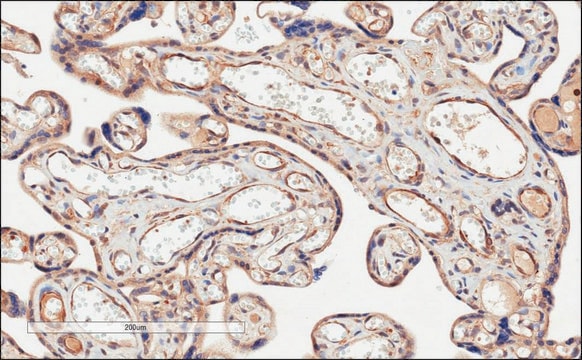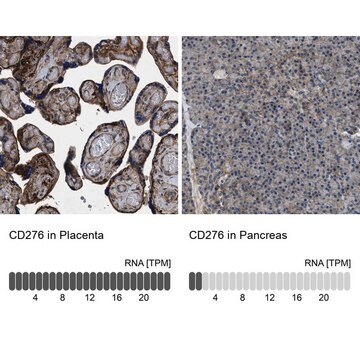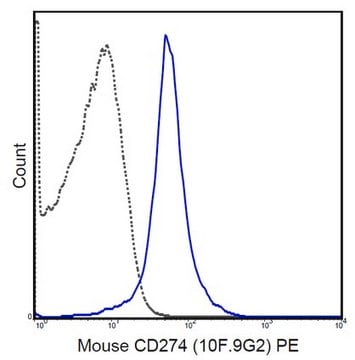MABC991
Anti-PD-L1 Antibody, clone 10F.9G2
clone 10F.9G2, from rat
Synonyme(s) :
PD-L1, PDCD1 ligand 1, Programmed death ligand 1, B7 homolog 1, B7-H1, CD274
About This Item
Produits recommandés
Source biologique
rat
Niveau de qualité
Forme d'anticorps
purified antibody
Type de produit anticorps
primary antibodies
Clone
10F.9G2, monoclonal
Espèces réactives
mouse
Technique(s)
flow cytometry: suitable
immunohistochemistry: suitable
inhibition assay: suitable
Isotype
IgG2bκ
Numéro d'accès NCBI
Numéro d'accès UniProt
Conditions d'expédition
ambient
Modification post-traductionnelle de la cible
unmodified
Catégories apparentées
Description générale
Spécificité
Immunogène
Application
Induces Function Analysis: Blockade with a representative lot of anti-PD-L1 combined with IL-2 enhanced antiviral CD8 T cell responses during chronic LCMV infection (West, E.E., et. al. (2013). J Clin Invest. 123(6):2604-15).
Inhibition Analysis: A representative lot blocked the action of PD-L1 (Grabie, N., et. al. (2007). Circulation. 116(18):2062-71;West, E.E., et. al. (2013). J Clin Invest. 123(6):2604-15;El Annan, J., et. al. (2010). Invest Ophthalmol Vis Sci. 51(7):3418-23).
Qualité
Flow Cytometry Analysis: 1 µg/mL of this antibody detected PD-L1 in one million EL4 cells.
Description de la cible
Liaison
Forme physique
Autres remarques
Not finding the right product?
Try our Outil de sélection de produits.
Code de la classe de stockage
12 - Non Combustible Liquids
Classe de danger pour l'eau (WGK)
WGK 2
Point d'éclair (°F)
Not applicable
Point d'éclair (°C)
Not applicable
Certificats d'analyse (COA)
Recherchez un Certificats d'analyse (COA) en saisissant le numéro de lot du produit. Les numéros de lot figurent sur l'étiquette du produit après les mots "Lot" ou "Batch".
Déjà en possession de ce produit ?
Retrouvez la documentation relative aux produits que vous avez récemment achetés dans la Bibliothèque de documents.
Les clients ont également consulté
Notre équipe de scientifiques dispose d'une expérience dans tous les secteurs de la recherche, notamment en sciences de la vie, science des matériaux, synthèse chimique, chromatographie, analyse et dans de nombreux autres domaines..
Contacter notre Service technique













